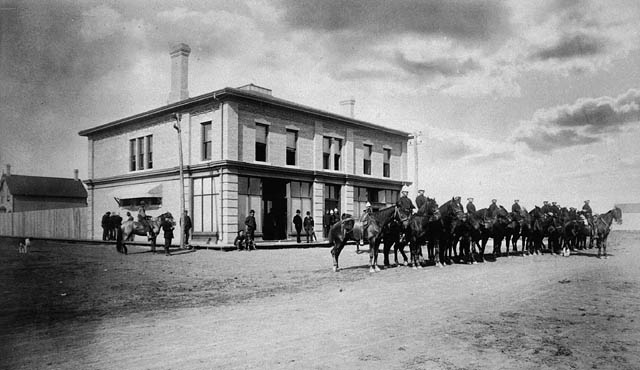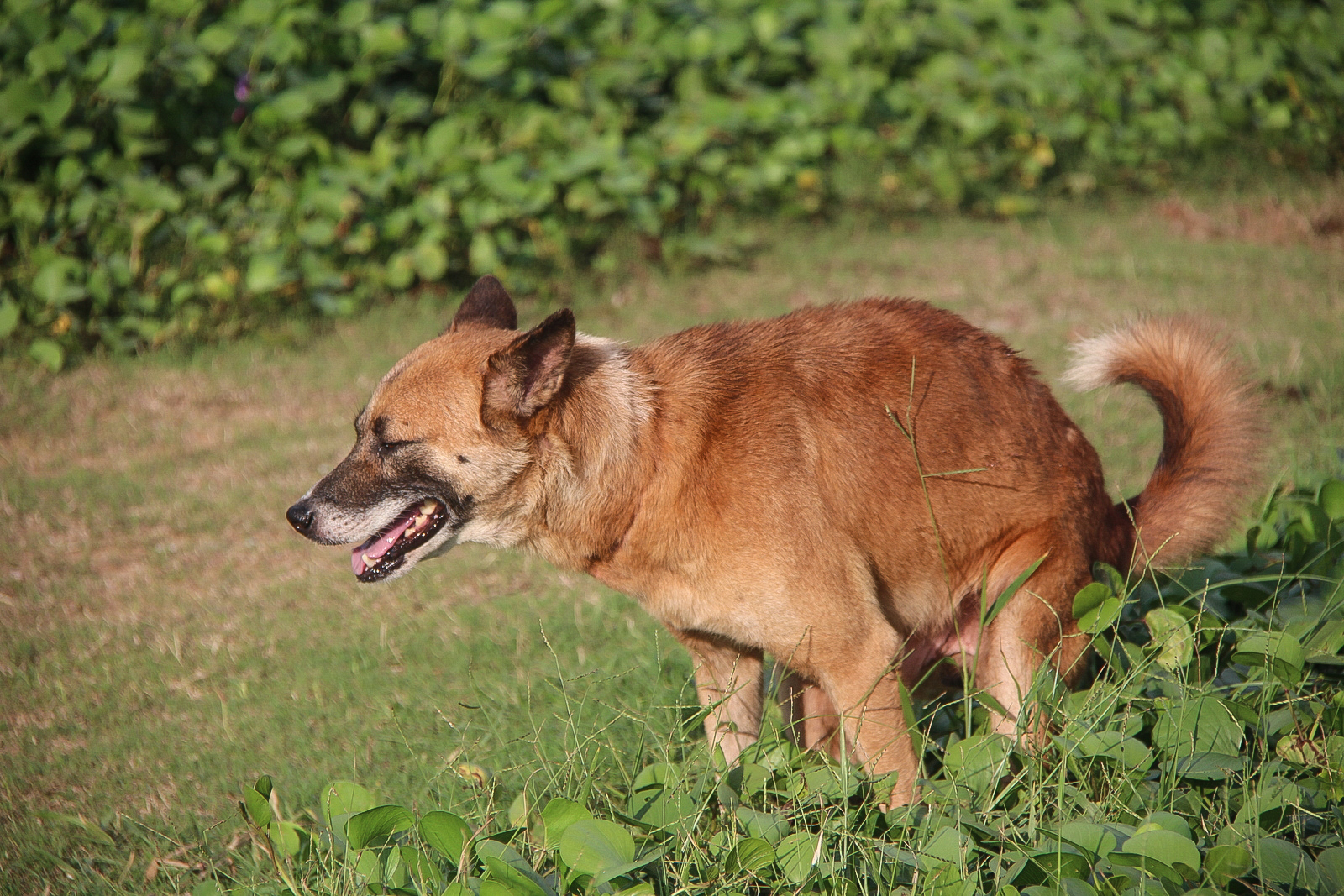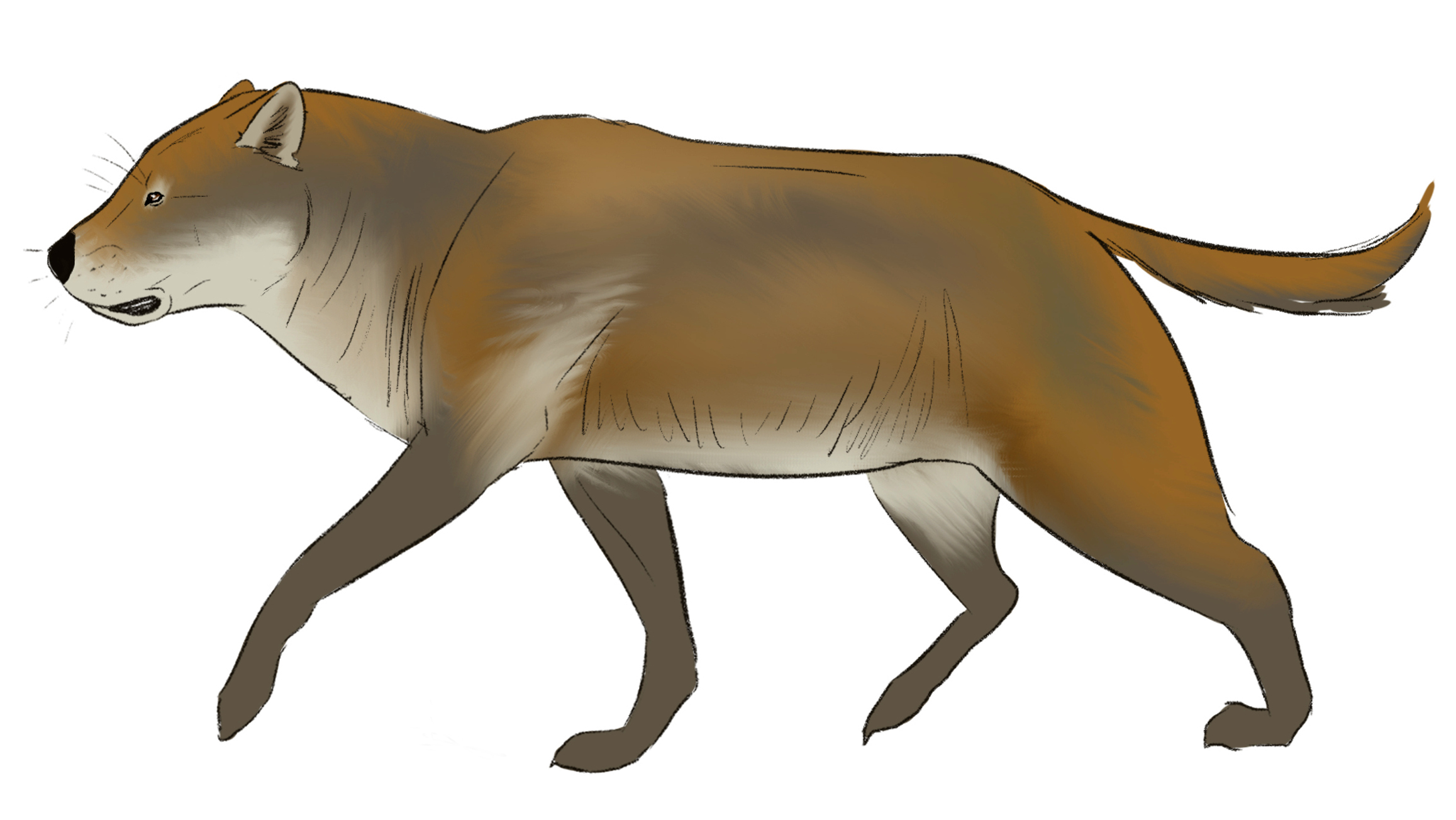|
Valerius Geist
Valerius Geist (2 February 1938 – 6 July 2021) was a German-Canadian biologist and a professor emeritus in the Faculty of Environmental Design at the University of Calgary. He was a specialist on the biology, behavior, and social dynamics of North American large mammals (elk, moose, bighorn sheep, other wild ungulates and wolves), and well respected on his views of Neanderthal people and behavior. Biography He was born on February 2, 1938, in Nikolajew (Mykolaiv) at the coast of the Black Sea, then part of the Ukrainian Soviet Socialist Republic and the USSR. Both parents, Olga Geist and Alexander Shutov, were naval engineers specializing in marine architecture (his mother worked on submarines and icebreakers). In 1943, probably considered as Black Sea Germans, he and his mother, aunt and grandmother, had to flee from Russia to Germany. After 10 years growing up in Austria and Germany, he immigrated to Canada in 1953, the same year his German-born wife arrived in Port Alberni ... [...More Info...] [...Related Items...] OR: [Wikipedia] [Google] [Baidu] |
Mykolaiv
Mykolaiv ( ), also known as Nikolaev ( ) is a List of cities in Ukraine, city and a hromada (municipality) in southern Ukraine. Mykolaiv is the Administrative centre, administrative center of Mykolaiv Raion (Raions of Ukraine, district) and Mykolaiv Oblast (Oblasts of Ukraine, province). The city of Mykolaiv, which provides Ukraine with access to the Black Sea, is the location of the most downriver bridge crossing of the Southern Bug river. This city is one of the main shipbuilding centers of the Black Sea. Aside from three shipyards within the city, there are a number of research centers specializing in shipbuilding such as the State Research and Design Shipbuilding Center, Zoria-Mashproekt and others. As of 2022, the city had a population of Mykolaiv holds the honorary title Hero City of Ukraine. The city serves as a transportation hub for Ukraine, containing a sea port, commercial port, river port, highway, Junction (rail), railway junction, and airport. Much of Mykolaiv's ... [...More Info...] [...Related Items...] OR: [Wikipedia] [Google] [Baidu] |
Regina, Saskatchewan
Regina ( ) is the capital city of the Provinces and territories of Canada, Canadian province of Saskatchewan. The city is the second-largest in the province, and is a commercial centre for southern Saskatchewan. As of the 2021 Canadian census, 2021 census, Regina had a List of cities in Saskatchewan, city population of 226,404, and a List of census metropolitan areas and agglomerations in Canada, metropolitan area population of 249,217. It is governed by Regina City Council. The city is surrounded by the Rural Municipality of Sherwood No. 159. Regina was History of Northwest Territories capital cities, previously the seat of government of the Northwest Territories, North-West Territories, of which the current provinces of Saskatchewan and Alberta originally formed part, and of the District of Assiniboia. The site was previously called Wascana (from "Buffalo Bones"), but was renamed to ''Regina'' (Latin for "Queen") in 1882 in honour of Queen Victoria. The name was proposed by Q ... [...More Info...] [...Related Items...] OR: [Wikipedia] [Google] [Baidu] |
Bison
A bison (: bison) is a large bovine in the genus ''Bison'' (from Greek, meaning 'wild ox') within the tribe Bovini. Two extant taxon, extant and numerous extinction, extinct species are recognised. Of the two surviving species, the American bison, ''B. bison'', found only in North America, is the more numerous. Although colloquially referred to as a buffalo in the United States and Canada, it is only distantly related to the true buffalo. The North American species is composed of two subspecies, the Plains bison, ''B. b. bison'', and the generally more northern wood bison, ''B. b. athabascae''. A third subspecies, the eastern bison (''B. b. pennsylvanicus'') is no longer considered a valid taxon, being a junior synonym of ''B. b. bison''. Historical references to "woods bison" or "wood bison" from the Eastern United States refer to this synonym animal (and to their eastern woodland habitat), not to ''B. b. athabascae'', wh ... [...More Info...] [...Related Items...] OR: [Wikipedia] [Google] [Baidu] |
White-tailed Deer
The white-tailed deer (''Odocoileus virginianus''), also known Common name, commonly as the whitetail and the Virginia deer, is a medium-sized species of deer native to North America, North, Central America, Central and South America. It is the most widely-distributed mainland ungulate herbivore in the Americas; coupled with its natural predator, the Cougar, mountain lion (''Puma concolor''), it is one of the most widely-distributed terrestrial mammal species in the Americas and the world. Highly adaptable, the various subspecies of white-tailed deer inhabit many different ecosystems, from arid grasslands to the Amazon basin, Amazon and Orinoco Basin, Orinoco basins; from the Pantanal and the Llanos to the high-elevation terrain of the Andes. Globally, the white-tailed deer has been introduced (primarily for Trophy hunting, sport hunting) to New Zealand, the Greater Antilles of the Caribbean (Cuba, Jamaica, Hispaniola, and Puerto Rico), and some countries in Europe (mainly the Cz ... [...More Info...] [...Related Items...] OR: [Wikipedia] [Google] [Baidu] |
Hydatid Disease
Hydatid may refer to: * Echinococcosis * ''Echinococcus granulosus'', known as the hydatid tapeworm * Hydatid of Morgagni The hydatid of Morgagni can refer to one of two closely related bodily structures: * Appendix of testis (in the male) * Paraovarian cyst (in the female) {{set index article Sexual anatomy Mammal reproductive system ... * Hydatidiform mole or hydatid mole {{disambig ... [...More Info...] [...Related Items...] OR: [Wikipedia] [Google] [Baidu] |
Dog Tapeworm
''Echinococcus granulosus'', also called the hydatid worm or dog tapeworm, is a cyclophyllid cestode that dwells in the small intestine of canids as an adult, but which has important intermediate hosts such as livestock and humans, where it causes cystic echinococcosis, also known as hydatid disease. The adult tapeworm ranges in length from 3 mm to 6 mm and has three proglottids ("segments") when intact—an immature proglottid, mature proglottid and a gravid proglottid. The average number of eggs per gravid proglottid is 823. Like all cyclophyllideans, ''E. granulosus'' has four suckers on its scolex ("head"), and ''E. granulosus'' also has a rostellum with hooks. Several strains of ''E. granulosus'' have been identified, and all but two are noted to be infective in humans. The lifecycle of ''E. granulosus'' involves dogs and wild carnivores as a definitive host for the adult tapeworm. Definitive hosts are where parasites reach maturity and reproduce. Wild or domes ... [...More Info...] [...Related Items...] OR: [Wikipedia] [Google] [Baidu] |
Wolfdog
A wolfdog is a canine produced by the mating of a domestic dog (''Canis familiaris'') with a gray wolf (''Canis lupus''), eastern wolf (''Canis lycaon''), red wolf (''Canis rufus''), or Ethiopian wolf (''Canis simensis'') to produce a hybrid. Admixture There are a range of experts who believe that they can tell the difference between a wolf, a dog, and a wolfdog, but they have been proven to be incorrect when providing their evidence before courts of law. Admixture between domestic dogs and other subspecies of gray wolves are the most common wolfdogs since dogs and gray wolves are considered the same species, are genetically very close and have shared vast portions of their ranges for millennia. Such admixture in the wild have been detected in many populations scattered throughout Europe and North America, usually occurring in areas where wolf populations have declined from human impacts and persecutions. At the same time, wolfdogs are also often bred in captivity ... [...More Info...] [...Related Items...] OR: [Wikipedia] [Google] [Baidu] |
Coywolf
A coywolf is a canid hybrid descended from coyotes (''Canis latrans''), Eastern wolf, eastern wolves (''Canis lycaon''), Gray wolf, gray wolves (''Canis lupus''), and dogs (''Canis familiaris''). All of these species are members of the genus ''Canis'' with 78 chromosomes; they therefore can interbreed. One genetic study indicates that these species genetic divergence, genetically diverged relatively recently (around 55,000–117,000 years ago). Genomic studies indicate that nearly all North American gray wolf populations possess some degree of admixture with coyotes following a geographic Cline (biology), cline, with the lowest levels occurring in Alaska, and the highest in Ontario and Quebec, as well as Atlantic Canada. Another term for these hybrids is sometimes wolfote. Description Hybrids of any combination tend to be larger than coyotes but smaller than wolves; they show behaviors intermediate between coyotes and the other parent's species. In one captive hybrid experiment, ... [...More Info...] [...Related Items...] OR: [Wikipedia] [Google] [Baidu] |
Wolves
The wolf (''Canis lupus''; : wolves), also known as the grey wolf or gray wolf, is a canine native to Eurasia and North America. More than thirty subspecies of ''Canis lupus'' have been recognized, including the dog and dingo, though grey wolves, as popularly understood, only comprise naturally-occurring wild subspecies. The wolf is the largest wild extant member of the family Canidae, and is further distinguished from other '' Canis'' species by its less pointed ears and muzzle, as well as a shorter torso and a longer tail. The wolf is nonetheless related closely enough to smaller ''Canis'' species, such as the coyote and the golden jackal, to produce fertile hybrids with them. The wolf's fur is usually mottled white, brown, grey, and black, although subspecies in the arctic region may be nearly all white. Of all members of the genus ''Canis'', the wolf is most specialized for cooperative game hunting as demonstrated by its physical adaptations to tackling large p ... [...More Info...] [...Related Items...] OR: [Wikipedia] [Google] [Baidu] |
Enclosures
Enclosure or inclosure is a term, used in English landownership, that refers to the appropriation of "waste" or "common land", enclosing it, and by doing so depriving commoners of their traditional rights of access and usage. Agreements to enclose land could be either through a formal or informal process. The process could normally be accomplished in three ways. First there was the creation of "closes", taken out of larger common fields by their owners. Secondly, there was enclosure by proprietors, owners who acted together, usually small farmers or squires, leading to the enclosure of whole parishes. Finally there were enclosures by acts of Parliament. The stated justification for enclosure was to improve the efficiency of agriculture. However, there were other motives too, one example being that the value of the land enclosed would be substantially increased. There were social consequences to the policy, with many protests at the removal of rights from the common people. Enc ... [...More Info...] [...Related Items...] OR: [Wikipedia] [Google] [Baidu] |
Game
A game is a structured type of play usually undertaken for entertainment or fun, and sometimes used as an educational tool. Many games are also considered to be work (such as professional players of spectator sports or video games) or art (such as games involving an artistic layout such as mahjong, solitaire, or some video games). Games have a wide range of occasions, reflecting both the generality of its concept and the variety of its play. Games are sometimes played purely for enjoyment, sometimes for achievement or reward as well. They can be played alone, in teams, or online; by amateurs or by professionals. The players may have an audience of non-players, such as when people are entertained by watching a chess championship. On the other hand, players in a game may constitute their own audience as they take their turn to play. Often, part of the entertainment for children playing a game is deciding who is part of their audience and who participates as a player. A ... [...More Info...] [...Related Items...] OR: [Wikipedia] [Google] [Baidu] |
Canids
Canidae (; from Latin, ''canis'', "dog") is a biological family of caniform carnivorans, constituting a clade. A member of this family is also called a canid (). The family includes three subfamilies: the Caninae, and the extinct Borophaginae and Hesperocyoninae. The Caninae are known as canines, and include domestic dogs, wolves, coyotes, raccoon dogs, foxes, jackals and other species. Canids are found on all continents except Antarctica, having arrived independently or accompanied by human beings over extended periods of time. Canids vary in size from the gray wolf to the fennec fox. The body forms of canids are similar, typically having long muzzles, upright ears, teeth adapted for cracking bones and slicing flesh, long legs, and bushy tails. They are mostly social animals, living together in family units or small groups and behaving co-operatively. Typically, only the dominant pair in a group breeds and a litter of young are reared annually in an underground den. Canids ... [...More Info...] [...Related Items...] OR: [Wikipedia] [Google] [Baidu] |








